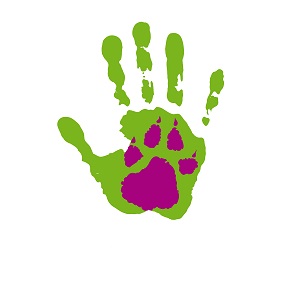What is Puppy Socialization
One of the most misunderstood aspects of puppy raising is the socialization. Everyone knows about obedience training – but nothing else.
Imprinting Behaviors
You have the power to imprint good behaviors on your puppy until 13 weeks old. After that the door closes -forever. This isn’t the time to spoil your puppy. This is the time to teach your puppy the most important behaviors.
The 3 C’s of Puppy Behavior
Teach a Behavior – Then Teach a Task – Then Expect obedience
If you get your puppy at 7- 8 weeks old, then you have 3 weeks to build the 3 C’s: Calm, Confidence, Compliance.
Everyone is so terrified of terms like ‘alpha roll’ and ‘dominance’ that they avoid teaching their puppy to be calm. This includes teaching a puppy self control, and frustration tolerance. Most puppies are raised today believing “I want it – I get it”. As they get older this manifests as a dog that drags its owner down the street when on a leash. In most cases improper (or lack of) socialization grows into aggression or reactive behaviors.
Calm – it is easy to teach a puppy to be calm.
If You Want a Calm Dog – Raise a Calm Dog.
Stop. That is it. Stop your walk every 50’ and make your puppy sit quiet. Wait until your puppy remains calm before you start walking again.
Give your puppy a massage. Teach it to lay still and let you touch its ears, feet, tail, etc. But remember that we want the puppy to lay quietly, and be calm for at least 10 minutes.
Play with your puppy at least 3x a day, 15 minutes each time. Every 5 minutes stop the game and hold the puppy (paws on the ground). Stop the game for 1 minute. Then repeat.
Do not let your puppy have everything it wants. If it pulls on the leash – stop walking. If it wants a ball – make it sit and wait. Put the puppy’s food down, make the puppy wait for a cue before it is allowed to eat.
And, last. If your puppy starts nipping, racing around, and ‘out of control’ then put it in a crate. Do not punish it. Just calmly put it in a crate.
Confidence
A puppy needs to learn. They are not born ‘knowing’. The best place is a puppy behavior/socialization class. This doesn’t mean let the puppy play with a group of other puppies. It means let the puppy solve puzzles, explore different areas, and ‘see’ different things, people, and places.
A puppy does not need to engage with strangers and dogs to get use to them. In fact, you can do more harm than good.
Sniffing – puppies need to sniff. They need to explore. They have a ‘map’ in their head. The bigger that emap is (by the time they are 13 weeks) the more ‘safe’ and confident they will feel. They will consider all this map as their home. This is why we say take your puppy to 100 places by 13 weeks and let it sniff everything, as much as he want. Don’t correct your puppy for sniffing and exploring.
Compliance
Obedience is a lifestyle. It needs to be something the puppy expects is part of their every day life. So training a puppy should be done 10 – 20x a day, for 1 – 2 minutes at a time.
Training follows protocol. First teach the behaviors – then teach the task. Teach a puppy to be calm, then teach a puppy to stay. Teach a puppy to follow you – then teach it to heel. Teach a puppy to look at you – then teach it to ignore people, dogs, and squirrels.
How to Teach a Puppy
But puppies need to learn. You cannot just put a leash on a puppy and start walking. Break it down into baby steps. Put the leash on and let the puppy drag it around the house unti it feels confident. Then take the puppy outside to the driveway ‘and play with it’. Take the puppy onto the street ‘and play with it.’ Take the puppy another block ‘and play with it.’ Start the walk in ‘baby steps.
Teach the puppy to like being ‘out’ and about.
Then teach the puppy to follow you.
Teach the puppy to focus on you.
Now it is time to teach the puppy to look at you when it is excited.
Last – go to an obedience class and teach your puppy heeling.
Other articles in this series:
- Behavior then obedience: Why I don’t Socialize Pt 2
- Puppy Socialization – You Can Do More Harm Than Good
- What is Puppy Socialization Pt 1
- What is Puppy Socialization
- Raising a Working Breed Puppy – Frustration Tolerance vs Impulse Control
Click here and then Download and read the paper:
‘Do No Let Puppies Bite’
More on Puppy Biting
Download Our Puppy Primers:
Download Our Puppy Primers:
First 10 Days Your Puppy Comes Home
Puppy Primer – Stop Puppies From Biting
